Penaeus vannamei postlarval survival and histological changes in gill and hepatopancreas acclimated to low salinity in the short-term: does dissolved salt content matter in defining their reduction rates?
Submited: 2024-06-07 12:42:27 | Published: 2025-06-30 18:48:32
DOI: https://doi.org/10.3856/vol53-issue3-fulltext-3294
Abstract
An experimental design was used to evaluate Penaeus vannamei postlarvae (PL) survival and histological changes in gills and hepatopancreas, and investigate the association between dissolved salt content and reduction rates for acclimation during reduction from 35 to 1 g L-1 over a 24 h acclimation period (A24h). Two treatments were based on adapted protocols available in the literature. The first, constant rate (CON-SAL), involved a gradual reduction of 1.45 g L-1 h-1 regardless of salt content. The second, variable rates according to salinity (VAR-SAL), began with a rapid reduction from 35 to 5 g L-1 in the first 4 h: 1 h at a 16 g L-1, 2 h at 9 g L-1, and 3 h at 5 g L-1 per hour, which was followed by a reduction of 0.25 g L-1 per hour from 5 to 2 g L-1 over 13 h and, finally, a slower reduction of 0.13 g L-1 per hour from 2 to 1 g L-1 over the last 8 h. A control group was maintained at 35 ± 1 g L-1 with 40% h-1 saltwater exchange. At the end of A24 h, all treatments were maintained for 24 h during a non-acclimation period (A24 h+). Live shrimp were counted, and samples were collected for histological analysis at the end of both periods. No statistical differences were found in survival at A24h, while VAR-SAL showed a significant reduction at A24 h+. Histological gill damage was observed in CON-SAL and VAR-SAL at A24 h, but VAR-SAL was the only group showing progressive damage at A24 h+. Both treatments resulted in hepatopancreas changes, but damage was more severe in VAR-SAL at both A24 h and A24 h+. These results support that the reduction rates should be defined as a concentration function, since VAR-SAL was less effective, likely due to the rapid reduction from 35 to 5 g L-1. Regardless of reduction rates, PL older than 15 days can survive salinity reductions to 1 g L-1 in a short period (A24 h). Few studies have investigated short-term histological changes during PL acclimation to low salinity, emphasizing the significance of these findings.



